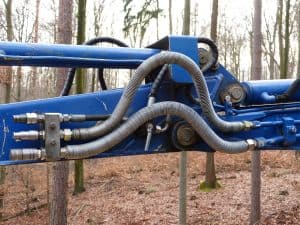Transforming Agricultural Workflows with Hydraulic Cylinder Technology
The agricultural industry plays a vital role in our economy and daily lives. It is responsible for providing food, raw materials, and employment to millions worldwide.

As the demand for efficient farming practices grows, farmers are increasingly turning to modern technologies to enhance productivity. One such technology making a significant impact is hydraulic cylinder technology.
This blog will explore how hydraulic cylinders are transforming agricultural workflows and improving efficiency, making farming more effective and sustainable.
The Hydraulic Cylinder Technology
They are mechanical devices that use pressurized fluid to produce motion. They convert hydraulic energy into linear motion, allowing heavy loads to be moved easily and precisely. These cylinders work by pushing or pulling a rod attached to various machinery and equipment used in agriculture.
A basic system consists of several components:
- Pumps: These generate hydraulic pressure by moving fluid through the system.
- Valves: Valves control the flow and direction of the hydraulic fluid, ensuring the cylinders operate effectively.
- Actuators: These convert the hydraulic energy into mechanical movement, enabling equipment to perform specific tasks.
Types of Hydraulic Cylinders
There are different types of hydraulic cylinders used in agriculture. The most common types include:
- Double-acting Cylinders: They can push and pull, providing power in both directions. Due to their versatility, they are widely used in various agricultural applications.
- Single-acting Cylinders: Unlike double-acting, these only move in one direction, using gravity or a spring to return to their original position. They are often used in simpler applications where less power is needed.
These days, it’s easier than ever to find these cylinders at affordable prices. Farmers can look for hydraulic cylinders for sale online and order them according to their needs. This accessibility makes it beneficial to incorporate this amazing technology into farming practices.
Benefits of This Technology in Agriculture
- Increased Efficiency
One of the primary benefits of these cylinders is increased efficiency. By automating tasks, these cylinders can significantly speed up agricultural operations. For example, hydraulic systems allow for quick lifting and lowering of equipment, saving time during planting and harvesting.
- Enhanced Precision
This technology provides more precise control over machinery. Farmers can adjust equipment accurately, leading to better outcomes. For instance, precise planting depth can improve crop yields. The ability to control equipment finely enhances the overall quality of the farming process.
- Reduced Labor Costs
Automation through the systems can reduce the need for manual labor. This means fewer workers are needed for tasks that were once time-consuming and labor-intensive. Lower labor costs can improve profitability for farmers, allowing them to reinvest in their operations.
- Versatility
They are versatile and can be used in various agricultural applications. They are commonly found in:
- Tractors: Used for lifting and lowering implements like plows and harrows.
- Plows: Allowing for easy adjustments in the field.
- Harvesters: Enabling efficient crop collection.
This versatility makes this technology a valuable asset in modern farming.
Applications of This Technology in Agriculture
Tractor Implements
They are widely used in tractor attachments. They facilitate the lifting and lowering various implements, such as plows and seeders. This capability allows farmers to switch between tasks quickly, improving overall productivity.
Irrigation Systems
They play a critical role in automated irrigation systems. They help control the water flow and adjust the positioning of irrigation lines, leading to better water management and ensuring crops receive the right amount of moisture at the right times.
Seeders and Planters
This technology enhances the efficiency and accuracy of seeders and planters. By controlling the planting depth and spacing with precision, farmers can optimize their planting processes. This ultimately leads to better crop establishment and higher yields.
Harvesting Equipment
Modern harvesting machines rely heavily on these cylinders. These cylinders help optimize harvesting by controlling various functions, such as cutting and collecting crops. The smooth operation provided by this technology increases the speed and efficiency of harvesting.
Challenges and Considerations
Initial Investment Costs
While it offers many benefits, the initial investment can be significant. Farmers must consider the costs of purchasing and implementing this equipment into their operations. However, the long-term savings and efficiency gains often outweigh the initial expenses.
Maintenance and Training
Regular maintenance is essential for these systems to function correctly. Farmers must ensure that their equipment is serviced regularly to avoid breakdowns. Additionally, training operators on how to use these systems effectively is crucial. Well-trained staff can maximize the benefits of this technology.
Compatibility with Existing Equipment
Before integrating this technology, farmers should assess the compatibility with their current machinery. Ensuring that new systems can work seamlessly with existing equipment is essential for a smooth transition.
Conclusion
This technology transforms agricultural workflows by improving efficiency, precision, and productivity. As farmers embrace this technology, they can benefit from reduced labor costs and enhanced operational versatility. By integrating these systems into their practices, farmers position themselves for future growth and success. Investing in this tech is not just a step forward; it’s a leap toward a more efficient and sustainable agricultural future.

